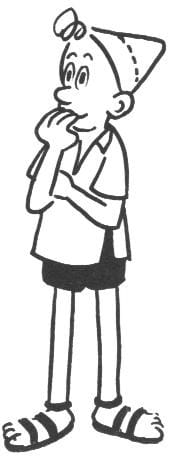Flee! Flee the St John Ambulance service!
They’re like vultures with high-vis jackets

Before coming to London, my friends and family loaded me up with good advice. A common theme running through these kernels of sagacity was that London is a very dangerous place – something I won’t even try and refute.
With every month that I stay and study here, I can feel the years sloughing off my life-expectancy. My lungs are the council estate battleground between TB and tar and their respective gangs. There are macroscopic dangers too, such as the fine art of stepping into the road to attract a taxi’s attention without losing a limb in the process. The strange otherkin that inhabit London after midnight are equally dangerous. Are they drunk-fighty, drunk-chatty, drunk-flirty or some horrid combination of the three?
But there is one danger in the Big Smoke that is not confined by the M25. This threat can be found in all major cities, indeed, wherever there are people. It can appear perfectly harmless from a distance but when it strikes, it strikes hard. It doesn’t discriminate between young and old, rich and poor or any other dichotomy society sees fit to draw. I am of course referring to St John Ambulance.
Now, you mustn’t misunderstand me. I think the service that St John Ambulance provides is fantastic. Looking after people with on-the-scene first aid and treatment is great, especially when it can take the pressure off the other ambulance services. Thanks to their sterling efforts, the mortality from the Oxford/Cambridge Boat Race has never been lower. However, I will say this. I think that St John Ambulance prevent incidents at all these public events in the same way the Bogeyman keeps five-year-olds in their beds at night.
It’s fear, pure and simple; it’s one of society’s greatest stimuli. A primaeval fear of the dark – and its contents – led to the creation of, at varied different times, fire, religion and the light-switch. Sport is no exception. I’ve mentioned before how a fundamental fear of leopards drove our ancestors to running. Where we once had leopards, we now have St John Ambulance.
But unlike leopards, the phobic response to these Good Samaritans is intricate and well-crafted. It is the fear of the unknown. If you’re unfortunate enough to be caught by St John Ambulance, what do they do to you? Ostensibly they’re there to help, the rational mind reasons; what is the harm? Then thoughts drift to the gas canisters, the ampoules of drugs, the defibrillators and people who have been trained to use them – and would do anything to try them out. And while that thought lingers and malingers in your head, you wonder why, of all the patients you’ve seen go into those ambulances, you’ve never seen any come out again. There is the fear of the unknown, with the caveat of some pretty good guesses.
But there is also a fear of the inevitable. On the savannah plains, every time a leopard took down a weak or injured gazelle, it was a memento mori to the herd that they too were mortal. So too do St John Ambulance toll the bells of our doom – with crowd-parting klaxons and flashing lights. Avoiding St John Ambulance at all costs avoids too the grim spectre of Death.
But for all this, St John Ambulance contributes a valued service to society. It’s not a necessary evil – the work they do is probably good...if their patients survive. No, instead they are the terrifying good. You know they’ll be there for you if you need them but you fervently pray that day will never come. Throughout this letter, I have been comparing them to leopards but now I realise this isn’t quite right. They’re more like vultures with high-vis jackets.








